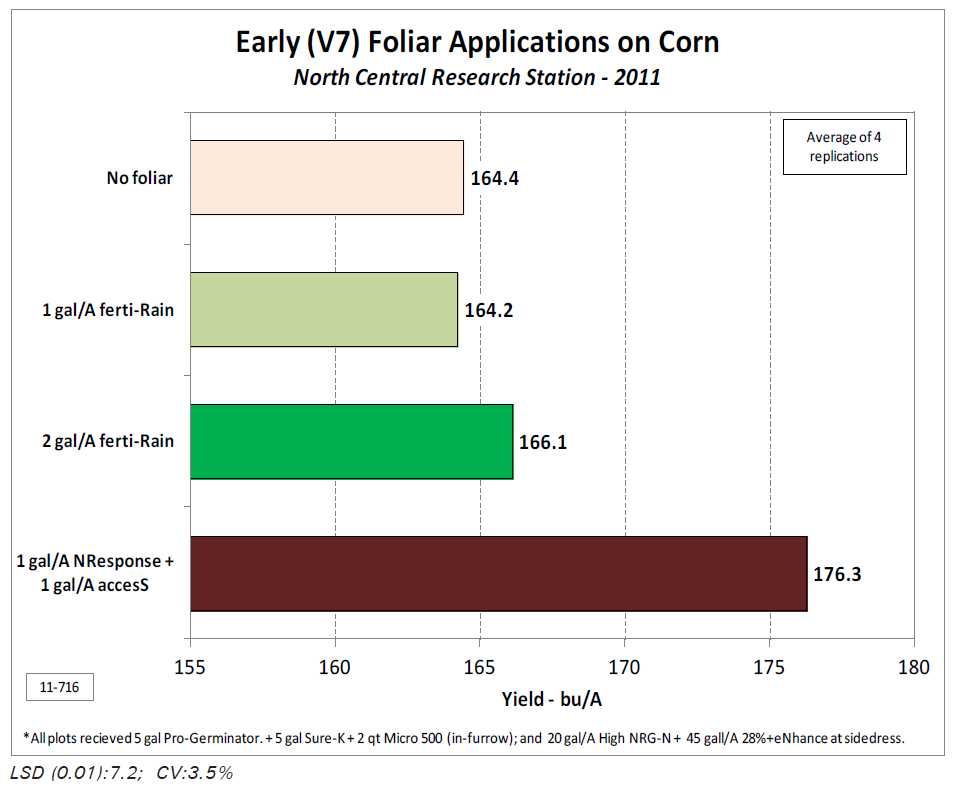Experiment Info
| Planted | 5/10/2011 |
| Variety | DeKalb 53-78 |
| Population | 32,000 |
| Previous Crop | corn |
| Plot Size | 15′ x 210′ |
| Replications | 4 |
| Sidedress | 6/15/2011 |
| Foliar (V7) | 6/17/2011 |
| Harvested | 11/2/2011 |
Soil Test Values (ppm)
| pH | 7.4 |
| CEC | 13.8 |
| %OM | 2.7 |
| Bicarb | 12 |
| K | 113 |
| S | 7 |
| %K | 2.1 |
| %Mg | 24.0 |
| %Ca | 73.7 |
| %H | 0 |
| %Na | 0.2 |
| Zn | 1.0 |
| Mn | 2 |
| B | 0.7 |
Objective:
Evaluate foliar applications of ferti-Rain and accesS + NResponse on corn in the V7 growth stage for effect on yield.
Foliar applications on crops such as soybeans have been proven to be effective in most cases. But this may be because foliar only applications on soybeans have been effective in the absence of soil-applied fertilizer. Foliar applications have not been shown to replace applications of fertilizer to the soil. But research continues to fi nd foliar treatments that can be effective additives to soil fertilizer programs. Success in this quest has been inconsistent. None the less, this year we applied some reduced rates of ferti-Rain (1 and 2 gal/A) and a new treatment, 1 gal/A each of accesS and NResponse. All foliars were applied in a total spray volume of 10 gal/A.
- In spite of the damage to the sprayed leaves, the only treatment to result in a yield increase was the one with NResponse + accesS. We should have taken tissue samples to see what plant nutrients were affected.
- The above treatment had no effect on subsequent growth, just on the sprayed leaves. NResponse has been sprayed on corn with no damage for years, but this is the first time to make foliar applications with the accesS, which must be the culprit for burn here. Perhaps next year we will apply accesS alone. It is unlikely that growers will accept such damage. But we will investigate further.
- The ferti-Rain did not have an effect on yield, which has been our experience with well-fertilized corn.


